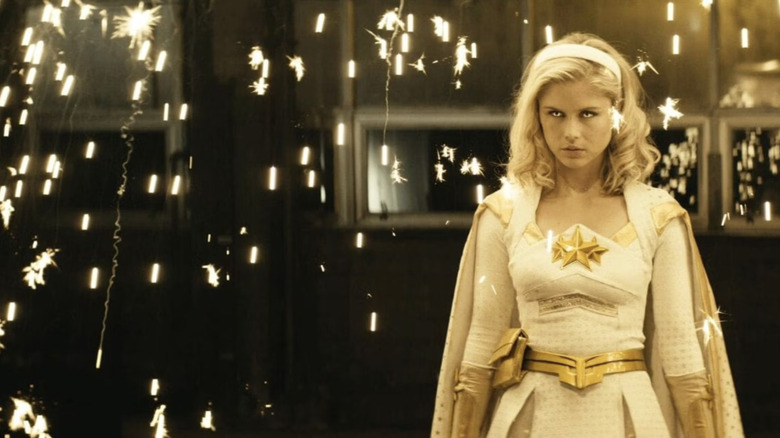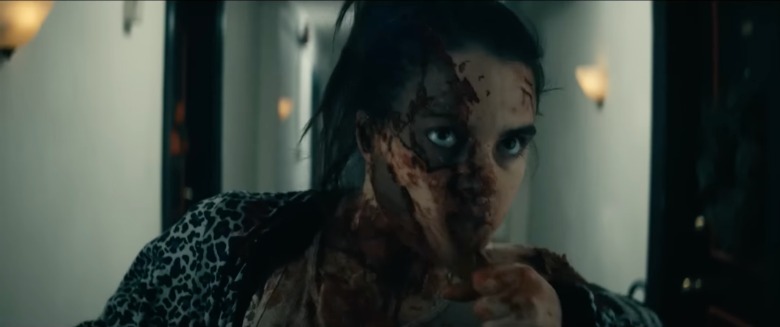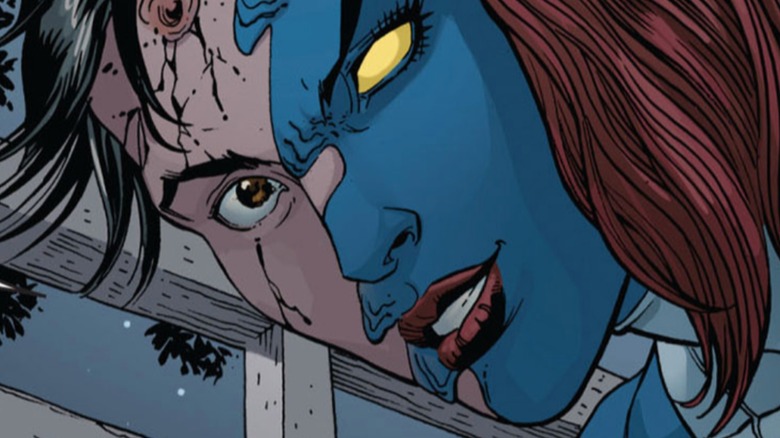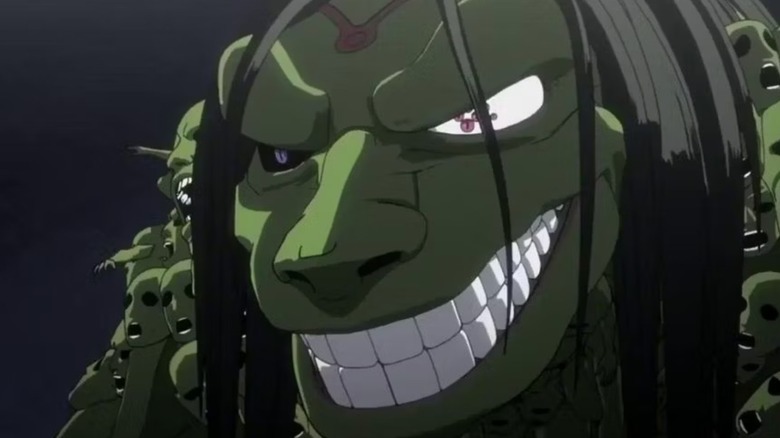The Boys Season 4 Introduces A New Villain With A Familiar Power
Spoilers for "The Boys" season 4 follow.
Annie January (Erin Moriarty) has been having an identity crisis this season on "The Boys." She shed her supe persona Starlight and is trying to change the world as just an activist. So far, she's unsure if that's enough.
This crisis just got a whole lot worse in the latest "The Boys" season 4 episode: "The Insider." Earlier in the episode, the Boys run into a terrified woman that turns out to be a shapeshifter; she "absorbs" someone's appearance by touching them and, when taking on her new face, has to tear off her old skin. ("The Boys" season 4 trailer included a shot of her doing just that — now we have the context for it.)
The episode's closing twist is that this shapeshifter (who is definitely up to no good) has replaced Annie. She's keeping the real one chained up while she (as Annie) gets cozy with Hughie (Jack Quaid). Will Wee Hughie pick up that his girlfriend's now an imposter? Stay tuned for the finale.
Shapeshifters are nothing new in superhero stories, not even "The Boys." Recall the late supe Doppelganger (Dan Darin-Zanco), who Homelander made turn into his oedipal lover Madelyn Stillwell (Elisabeth Shue) after he killed the real Stillwell. Doppelganger met his end in season 2 episode "Nothing Like It in the World" when he shapeshifted into Homelander and offered to let the man screw himself; Homelander didn't appreciate it.
Shapeshifters with similar powers as the Annie-impersonator were also some of the demonic monsters in "Supernatural," previously created by "The Boys" showrunner Eric Kripke. (Read /Film's recent interview with Kripke here.) Look at other superhero stories and you'll see many similar characters.
The evil shapeshifters of Marvel Comics
One of the most famed super-villain shapeshifters is Mystique/Raven Darkholme from "X-Men." A mutant, Mystique can change her appearance at will; the process isn't completely instantaneous but her new skin forms over her old one, no shedding needed. It's a lucky power because in her natural state, Mystique is a real blue meanie (her son Nightcrawler gets his skin color from her).
Mystique's control over her body's cells means that, similar to Wolverine, her aging is slowed and she's much older than she looks. Recent comics have even reclassified her power as gene-shifting due to how accurately she can mimic others' features. Mystique is also a notorious femme fatale (her name homages second wave feminist text "The Feminine Mystique" by Betty Friedan); she embodies two character archetypes known for deceit.
The first super-villain Spider-Man fought was also a master of disguise: The Chameleon (a reference to how chameleons can change the color of their skin). Unlike Mystique, he's no shapeshifter, he just wears masks (usually depicted as "Mission: Impossible" style latex masks) over a featureless white helmet.
At DC Comics, one of Batman's foremost enemies is Clayface. A human transformed into, essentially, a pile of living mud, he can mimic the appearance of others and solidify his body into whatever weapon he chooses.
What sets Clayface apart is his aesthetic, which is rooted in the malleability of clay. Most other shapeshifters, though, have reptile motifs. The Faux-Annie on "The Boys" is such a snake that she even sheds her skin like one.
Why shapeshifters often have reptile motifs
The villains of manga/anime "Fullmetal Alchemist" are homunculi named after the seven deadly sins. Envy is a shapeshifter, naturally. Since their sin is all about desiring what others have, they can take those by becoming whoever they want. When they change, alchemic light spreads across them and sparks out; Envy's shapeshifting is itself a type of alchemy (transmuting one substance into another), applied onto their own body.
Envy's androgynous spiky-haired human body is itself just another disguise. Their true form is a kaiju-sized lizard monster (when they turn into a human, their mass is extremely densely packed). The sin of Envy is literally green; the coloring effect is unfortunately lost in the manga, which uses only black-and-white, but is apparent in the anime. They're also not alone as a reptile-shapeshifter.
The Chameleon's very name is reptile inspired. The "X-Men" movies amp up Mystique's lizard-like presence too, giving her scaly skin and snake eyes. (Her eyes are yellow but pupiless in the comics.) The Skrulls, an entire race of shapeshifters in Marvel Comics, also have the green skin of lizards.
So, why are shapeshifting characters often compared with lizards? Because both things carry a connotation of deceit. Think back to the one of the oldest stories we have, The Book of Genesis, where a deceitful serpent lures Adam & Eve out of paradise with lies that danced upon its forked tongue. "Snake" is even shorthand for a distrust-worthy person.
If you're a skilled superhero writer, you'll give characters powers that reflect their personalities. So, in such stories, shapeshifters are usually sinister tricksters and the reptile motifs add to that characterization, including on "The Boys."
"The Boys" is streaming on Prime Video. The season 4 finale premieres on Wednesday, July 18, 2024.



